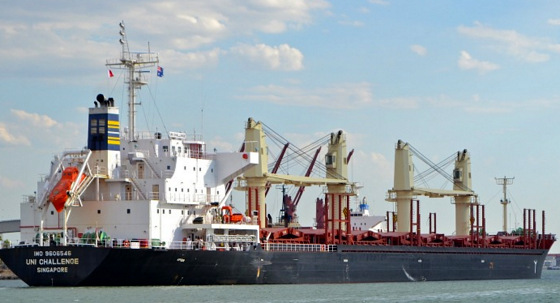Excerpts from KGI report
Analyst: Joel Ng
• Maintain Outperform while raising TP to S$1.42. Valuations are attractive amid the stronger-than-expected bulk carrier upcycle. Our new TP implies a 0.68x FY2021F P/B, which is still a conservative 30% discount to international peers who are trading above 1.0x P/B. |
|||||
To the moon. It is not only meme stocks that are reaching for the moon. Record demand for consumer goods and commodities, together with supply-chain disruptions, are driving charter rates for container liners and dry bulk carriers to their highest in more than ten years (triple from last year).
1H2021 results to provide confirmation. UAG will be announcing 1H2021 results on 13 August, after market hours. We expect the group’s fleet of 18 bulk carriers (10 wholly owned and 8 under JV entities) to drive financial performance.
Key drivers of the current boom. There are three key commodities driving the current demand for dry bulk carriers. These three commodities, which we highlight below, account for almost two thirds of the global dry-bulk trade based on a tonnage basis. Uni-Asia directly owns 10 dry bulk carriers and holds equity stakes in eight dry bulks under its joint-venture entities. Photo: Company
Uni-Asia directly owns 10 dry bulk carriers and holds equity stakes in eight dry bulks under its joint-venture entities. Photo: Company
The first is China’s iron ore imports. Seaborne supply of iron ore is the largest dry bulk commodity in terms of tonnage, accounting for 29% of total tonnage. China is the largest importer and accounts for more than 70% of global seaborne iron ore in 2019. In the first five months (Jan-May) of the year, China’s iron ore imports rose 6% YoY to 471.8mn tonnes.
The resumption of Brazilian iron ore exports after two challenging years is likely to provide further tailwinds for dry bulk charter rates since they have longer haul lengths.
The second driver is coal. Coal is the second largest dry bulk commodity that accounts for around 23% of seaborne tonnage. According to Clarksons Research, coking and thermal coal demand in 2021 is forecasted to increase by 6% and 4%, respectively.
Ironically, the resilience in seaborne coal tonnage was partially driven by China’s ban on Australian coal, which has caused China to increase its coal imports from Indonesia, Russia, South Africa, the US and Canada.
The third driver is grain and soybean exports from the US and Brazil. China, the world’s top importer of soybeans, ramped up its soybean purchase from the US as part of the Phase One trade deal.
China has brought in 38.2mn tonnes of soybeans in the Jan-May 2021 period, up 13% from the same period in 2020, as the country worked to rebuild its hog population.
Valuation & Action Joel Ng, analystWe maintain an OUTPERFORM rating while raising our TP to S$1.42, based on SOTP valuations. Joel Ng, analystWe maintain an OUTPERFORM rating while raising our TP to S$1.42, based on SOTP valuations. The favourable supply-demand dynamics for handysize dry bulk carriers should benefit the group over our forecast period. We raise the multiples for the shipping business to 0.8x FY2021F P/B (previously 0.5x FY2021F P/B); we also raise our multiple for its Japan & HK property business to 0.6x FY2021F P/B. Its balance sheet remains healthy as it continues to pare down debt; this will likely be a precursor to higher dividends. |
Risks: A supply-demand imbalance in the dry bulk shipping sector that leads to a drop in charter rates will have the largest short-term impact on UAG’s earnings.
Full report here.





